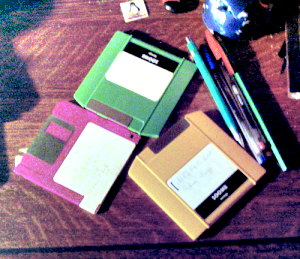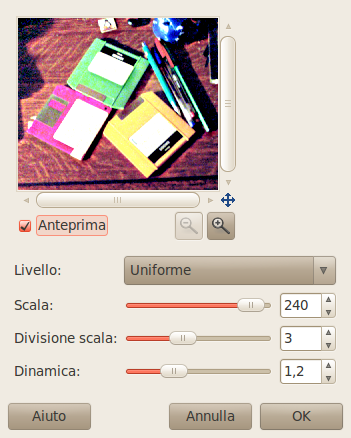Figura 16.207. Esempio di «Retinex»

Immagine originale

Il filtro «Retinex» applicato. Si noti la comparsa di nuovi dettagli nell'angolo in alto a destra.
"Retinex" migliora la resa visiva di un'immagine quando le condizioni di illuminazione non sono buone. Mentre il nostro occhio può vedere i colori correttamente in condizioni di scarsa illuminazione, le macchine fotografiche e le videocamere hanno qualche difficoltà. L'algoritmo MSRCR (MultiScale Retinex with Color Restoration - Retinex MultiScala con Restauro del Colore) che è alla base del filtro "Retinex" si rifà al funzionamento dell'occhio per adattarsi a queste condizioni. "Retinex" è una contrazione dei termini retina e cortex.
Besides digital photography, the Retinex algorithm is also used to make the information in astronomical photos visible and, in medicine, detect poorly visible structures in X-rays or scans.
![[Nota]](images/note.png)
|
Nota |
|---|---|
|
This command only works on RGB images. If the image is Grayscale or Indexed, the menu entry is disabled. |
These options call for notions that only mathematicians and imagery engineers can understand. In actual practice, the user has to grope about for the best setting. However, the following explanations should help out the experienced GIMP user.
- Livello
-
Here is what the plug-in author writes on his site [PLUGIN-RETINEX]: «To characterize color variations and the light source, a difference in intensity is made between the (Gaussian) filter responses at different scales. These parameters allow you to specify how to distribute the values between the minimum scale value (sigma 2.0) and the maximum (sigma equal to image size)».
- Uniforme
-
Uniform tends to treat both low and high intensity areas equally.
- Basso
-
Come regola empirica, basso «accende» le aree a bassa intensità presenti nell'immagine.
- Alto
-
Alto tende a «nascondere» le aree a bassa intensità favorendo una resa migliore delle aree più chiare dell'immagine.
- Scala
-
Determines the depth of the Retinex scale. Minimum value is 16, a value providing rough, unrefined filtering. Maximum value is 250. Optimal and default value is 240.
- Divisione scala
-
Determina il numero di iterazioni nel filtro multiscala Retinex. Il valore minimo richiesto e raccomandato è tre. Suddivisioni di scala di uno o due rimuovono l'aspetto multiscala e degradano in un filtraggio Retinex a scala singola. Un valore troppo alto tende a introdurre disturbi nell'immagine.
- Dinamica
-
Poiché l'algoritmo MSR tende a rendere l'immagine più chiara questo cursore permette di regolare la contaminazione della saturazione dei colori attorno al nuovo colore medio. Un valore maggiore significa meno saturazione di colore. Questo parametro si deve necessariamente regolare per ottimizzare il risultato, dato che il suo effetto è estremamente dipendente dall'immagine.




